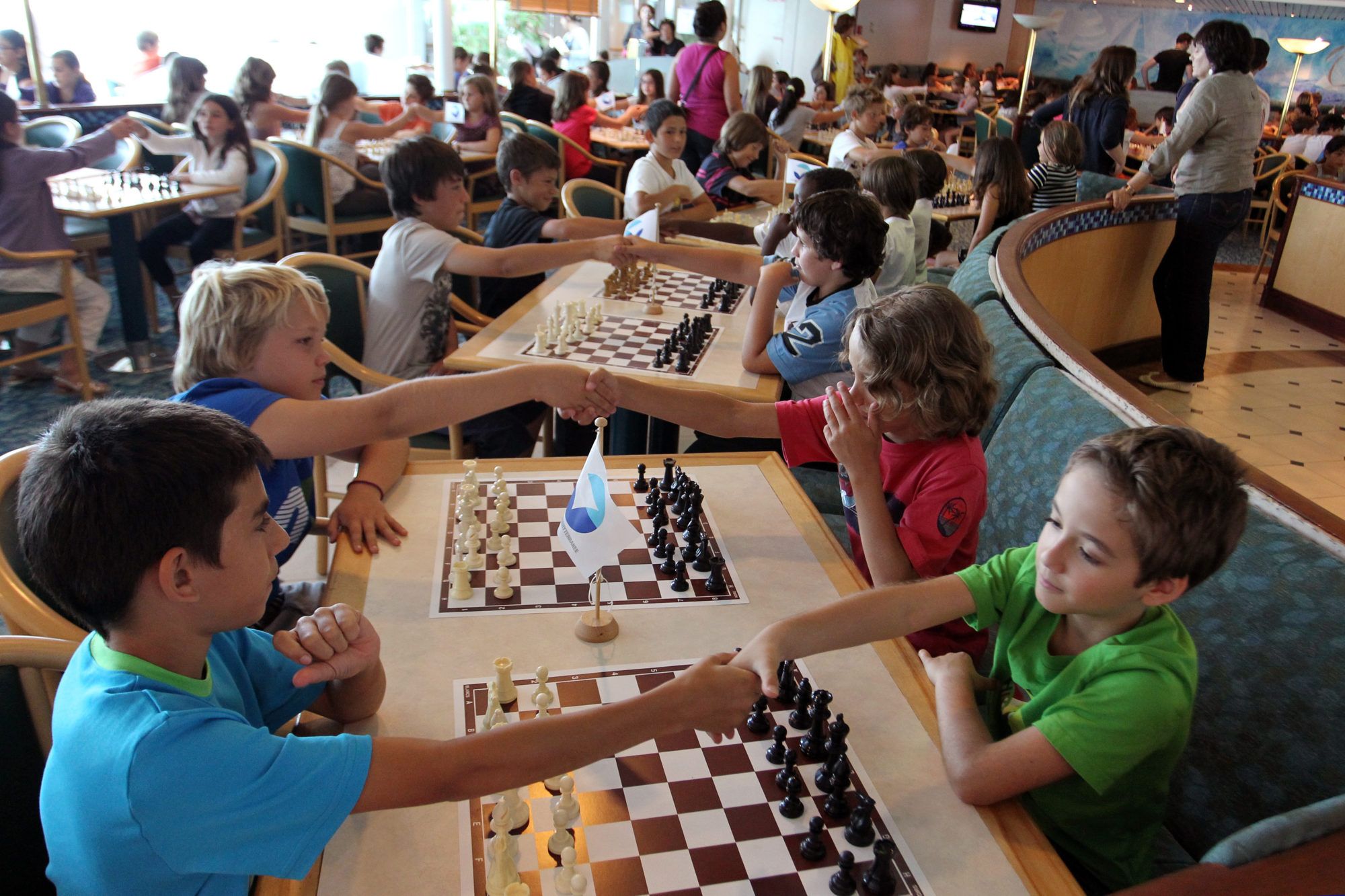
How Chess Helps Kids Succeed In School -- And In Life
There’s no better way for children to learn than when they’re having fun playing games – and there’s no better game to teach essential academic and behavioral skills than chess.
Chess helps students learn everything from problem-solving to sitting still, from spatial reasoning to coping with defeat. In short, it provides the building blocks to succeed in school -- and later in work and in life!
Here are 10 reasons why all children should learn chess.
- Teaches concentration.
- Fosters problem-solving.
- Requires critical thinking and patience.
- Demands planning and thinking ahead.
- Provides lessons in coping with defeat.
- Exercises both sides of the brain.
- Boosts self-esteem.
- Leads to academic success.
- Girls excel, too.
- Chess is fun.
1. Chess teaches concentration.
It’s an amazing sight to see a room full of young kids at a chess club or tournament sitting still for games that can last an hour or more. Okay, maybe they’re fidgeting just a bit, but they’re still in their chairs! Chess teaches kids to maintain concentration for an extended length of time, because they soon learn that one lapse in focus can turn a winning position into a loss.

2. Chess fosters problem-solving.
At literally every turn, a chess player must solve problems. What’s my opponent up to? Do I need to defend or can I attack? My opponent has left a piece unguarded – can I capture it, or is it a trap?

3. Chess requires critical thinking and patience.
There’s a saying in chess: “When you see a good move, stop and look for a better one.” Chess teaches children to be methodical, to calculate deeply, to consider different alternatives and to double-check their analysis before making a hasty move.

4. Chess demands planning and thinking ahead.
Students quickly discover that simply reacting to an opponent’s moves is a recipe for disaster. Instead, they learn to formulate their own plan, envision where they’d ideally like to place their pieces, and then figure out a way to get them there!

5. Chess provides lessons in coping with defeat.
No matter how good a child is at chess, he or she is going to lose games – lots of them! It’s been said that to become expert at chess you need to lose a thousand games – or more! Learning from your mistakes is how you improve at chess. And losing – and winning -- gracefully is strongly emphasized. Kids are taught that every game should begin and end with a handshake.

6. Chess exercises both sides of the brain.
Studies of both chess experts and school kids have found that playing chess engages not only the brain’s left hemisphere, which performs tasks having to do with math and logic, but also the right side, which is responsible for creativity, visual perception and spatial relationships. So it’s not surprising that great actors, artists and musicians – including Humphrey Bogart, Marcel Duchamp, Ray Charles, and Mark Taimanov – were passionate about chess or even world class players.

7. Chess boosts self-esteem.
Chess, like music, produces prodigies. Kids can get very good very fast. At “adult tournaments,” it’s not uncommon to see a 6-foot, 200-pound man being crushed by a 4-foot-9, 80-pound 12-year-old. Imagine the confidence boost that gives a child to beat an adult at an intellectual pursuit!

8. Chess leads to academic success.
Given all the skills that chess demands of or instills in children, it’s not surprising that numerous studies have found that students who play chess do better in math, science spatial reasoning and memory. But researchers also found that students improved at reading and verbal reasoning. The skills that chess fosters are the same skills that will help children do better in all aspects of school.

9. Girls excel at chess, too.
School chess clubs tend to attract far more boys than girls. But when girls are exposed to the game, they have proven that they can compete at the highest level. Hungarian Grandmaster Judit Polgar was one of the world’s best players in the 1990's and early 2000's, at one point ranked number 8 in the world. Adding chess to the classroom curriculum – as many schools around the world are doing – would be a good way to get more girls involved.

10. Chess is fun.
None of the skills chess teaches would matter if kids felt that the game was boring. But just watch when a group of kids gets together around a chess board. If they’re not in a pin-drop-quiet tournament hall, then laughter, good-natured trash-talking and shouts of delight fill the air as they play different variations of the game: Blitz (5 minutes for the whole game for each player), Bullet (only 1 minute each!), Take Me (the object is to lose all your pieces!) and Bughouse (teams of two play each other and share pieces!). Watch this video of Bughouse players in action!
TO GET STARTED:
- ChessKid.com is a safe place for kids to learn the game and play with other kids in a wholesome, bully-free environment. There are a variety of tools, puzzles and real-time games against other kids or against computer robots, plus a fully curated curriculum.
- 5 great chess books for beginners.
- How to play chess: Rules + 7 steps to begin.
What benefits have you seen chess bring to children? Share your thoughts in the comments below.